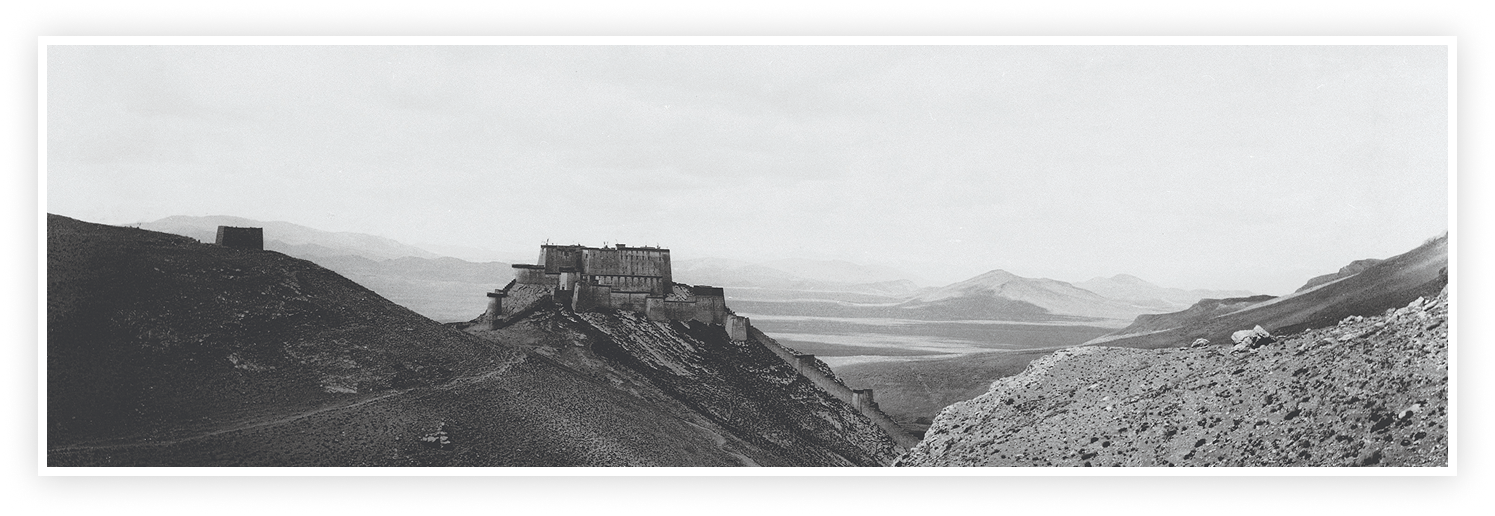Negotiations
This was a slow invasion. The Tibetans used delaying tactics to stop the British from moving closer to Lhasa. In some cases, the British waited months for Tibetan officials to arrive for negotiations. These long waits gave the British the opportunity to collect plants, kill wild animals for sport or for museum collections, and they explored mountain ranges and valleys. It also offered British men the chance to photograph Tibet.

After the fighting at Gyantse the British troops moved closer and closer to Lhasa. This photograph taken on 19th July shows Tibetan officials including, Yuthok Shapé and the Ta Lama in Colonel Younghusband’s tent at Nagartse. Their aim was to stop the British marching on Lhasa.
Some of the most well known Mission photographs were taken in 1903 by John Claude White while he waited for Tibetan officials to arrive at Khamba Dzong. From there he travelled to Tatsang Nunnery and photographed the nuns wearing woollen wigs, and he also captured rare panoramic images of the Tibetan landscape.

One of the many views taken of Khamba Dzong by John Claude White.

John Claude White recalled his visit to the nunnery in an article for the National Geographic magazine. He described the nuns as, “the dirtiest lot of women I have ever seen”. His comments reflect the racism shown towards Asian people by colonial officers during the British Empire’s rule.
This was a slow invasion. The Tibetans used delaying tactics to stop the British from moving closer to Lhasa. In some cases, the British waited months for Tibetan officials to arrive for negotiations. These long waits gave the British the opportunity to collect plants, kill wild animals for sport or for museum collections, and they explored mountain ranges and valleys. It also offered British men the chance to photograph Tibet.

Some of the most well known Mission photographs were taken in 1903 by John Claude White while he waited for Tibetan officials to arrive at Khamba Dzong. From there he travelled to Tatsang Nunnery and photographed the nuns wearing woollen wigs, and he also captured rare panoramic images of the Tibetan landscape.

